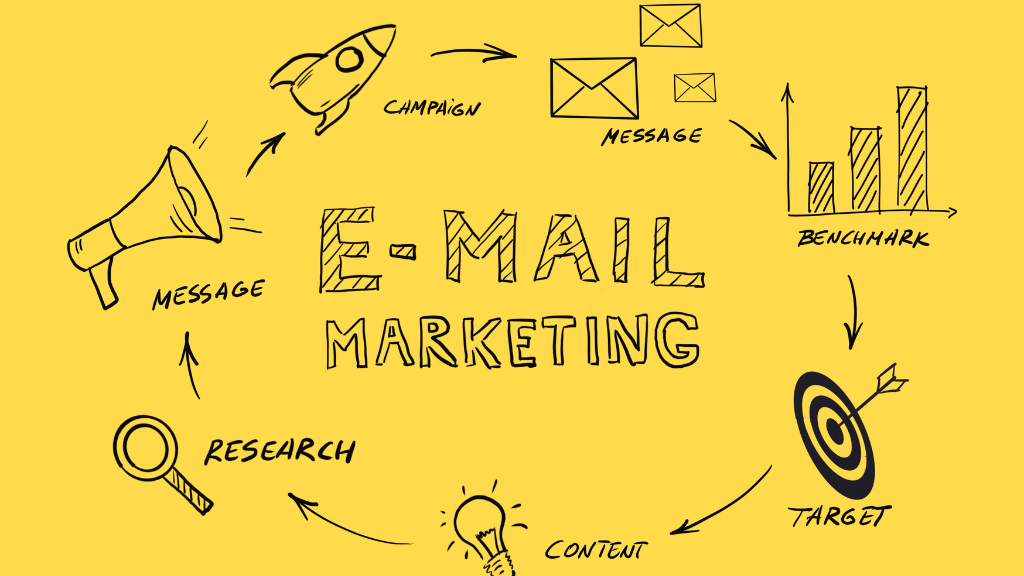Content Marketing Strategy that Generates Leads!
Content marketing has emerged as a powerful tool to drive business growth. With the right strategy in place, content marketing can not only enhance brand awareness but also generate valuable leads. A well-executed content marketing strategy is the key to not only capturing your audience's attention but also converting them into valuable leads.
By understanding your target audience, crafting compelling content, and leveraging various distribution channels, you can maximize your reach and impact. This article presents a step-by-step guide on how to create a content marketing strategy that not only engages but also generates valuable leads for your business. This blog delves into the steps for crafting an effective content marketing strategy that focuses on generating leads.
1) Define Your Target Audience and Goals
To create content that resonates with your audience, start by clearly defining your target market. Understand their pain points, desires, and preferences. Additionally, set specific lead generation goals, such as increasing website sign-ups, email subscriptions, or inquiries. Having a well-defined target audience and goals lays a strong foundation for your content marketing efforts. Let's dive deeper into why this step is crucial and how to go about it:
a. Identify Your Target Audience: Understanding your target audience is fundamental to creating content that resonates with them. Start by conducting market research and analyzing your existing customer base. Define key demographics such as age, gender, location, and income level. Additionally, delve into psychographics, including their interests, behaviors, values, and pain points. Developing buyer personas can help you visualize and empathize with your ideal customers, making it easier to tailor content to their needs.
b. Segment Your Audience: It's essential to recognize that your audience may consist of diverse groups with varying preferences and requirements. Segment your audience based on shared characteristics or behavior patterns. This segmentation enables you to craft highly targeted content that speaks directly to each group, increasing engagement and conversions.
c. Address Pin Points and Needs: Once you've identified your target audience, pinpoint their pain points and needs. Determine the challenges they face and the questions they seek answers to. Your content should provide valuable solutions and insights, positioning your brand as a helpful resource.
d. Understand the Buyer's Journey: The buyer's journey consists of different stages, from awareness to consideration and decision-making. Tailor your content to each stage of this journey. For instance, use educational content for the awareness stage, comparison guides for the consideration stage, and product-focused content for the decision-making stage.
2) Conduct Comprehensive Keyword Research

Keyword research is pivotal in content marketing. Identify relevant keywords related to your industry and niche, including long-tail keywords that address specific queries. Tools like Google Keyword Planner, SEMrush, or Ahrefs can aid in finding valuable keywords that will drive organic traffic and generate leads.
3) Develop High-Quality, Valuable Content
The heart of any successful content marketing strategy is high-quality content that offers real value to your audience. Create informative blog posts, in-depth guides, engaging videos, infographics, and downloadable resources that address your audience's pain points. Content that educates, entertains, and solves problems establishes your brand as an authority and attracts potential leads.
People are hesitant to disclose their contact information these days since their inboxes are already overflowing with spam. You must first add value in order to attract that lead. And lead magnets serve that purpose. They function as a motivator for visitors to divulge their personal information and assist in solving a problem for your audience.
For your content marketing campaigns, the following kinds of material can act as lead magnets: E-Books, Reports, Webinars, Quizzes, Courses, Videos
4) Optimize Content for Lead Generation
While creating content, strategically place lead magnets, such as call-to-action (CTA) buttons, email sign-up forms, or gated content offers, within your blog posts or videos. These lead capture elements encourage visitors to take action and share their contact information, converting them into potential leads.
The marketing concept, a customer-centric philosophy, revolves around satisfying customer needs and wants. Unlike earlier production-oriented approaches, this concept places customers at the forefront of business decisions.
For businesses exploring options in customer engagement platforms, considering a HeyFlow alternative might provide innovative solutions aligned with this philosophy.
The core tenets of the marketing concept include understanding and meeting customer needs, fostering long-term relationships, and continuously adapting to market changes to ensure customer satisfaction.
5) Leverage Content Distribution Channels

A well-crafted content piece deserves widespread exposure. Utilize various distribution channels to amplify your content's reach. Promote your blog posts and sales videos on social media platforms, email newsletters, industry forums, and guest postings on relevant websites. By expanding your content's visibility, you increase the chances of reaching your target audience and attracting leads. Here's a deeper look into how to effectively utilize various content distribution channels:
a. Social Media Platforms: Share your content on popular social media platforms like Facebook, Twitter, LinkedIn, Instagram, and Pinterest. Each platform caters to different audiences, so tailor your content accordingly. Use eye-catching visuals, compelling captions, and relevant hashtags to increase visibility and engagement.
b. Email Newsletters: Send your content directly to your email subscribers through eNewsletters. Email marketing allows you to maintain a direct and personalized connection with your audience. Segment your email lists to send targeted content to different groups of subscribers based on their interests and behavior.
c. Content Aggregator Sites: Submit your blog posts, articles, and infographics to content aggregator sites like Reddit, Growth-Hackers, or Inbound.org. These platforms can significantly boost your content's exposure and attract a new audience interested in your niche.
d. Industry Forums and Groups: Participate in relevant industry forums and online groups. Share your content when it adds value to the discussions or addresses members' questions. Avoid overly promotional tactics, and focus on building relationships with the community.
6) Nurture Leads with Email Marketing

Email marketing remains one of the most effective lead nurturing tools. Create segmented email lists and deliver personalized content tailored to the interests of each group. Use automated email sequences to nurture leads, building trust and guiding them through the customer journey. Here's a comprehensive look at how to effectively nurture leads with email marketing:
a. Segmentation: Segment your email list based on different criteria such as demographics, behavior, interests, or where they are in the sales funnel. By segmenting your list, you can send targeted and personalized content that is more relevant to each group, increasing engagement and conversion rates.
b. Welcome Email Series: When someone joins your email list, send them a series of welcome emails to introduce your brand, provide valuable information, and set expectations for the type of content they'll receive. Use this opportunity to make a positive first impression and start building a relationship with your new leads.
c. Educational Content: Provide educational content that addresses your leads' pain points and challenges. Share blog posts, guides, tutorials, and videos that offer valuable insights and solutions. Position yourself as a helpful resource, and avoid being overly promotional in these emails.
d. Promotional Offers and Discounts: Occasionally include promotional offers, discounts, or exclusive deals in your emails. Limited-time promotions can encourage leads to take action and make a purchase. Consider the option to create a flyer as part of your promotional strategy. However, strike a balance and avoid bombarding your leads with constant sales pitches.
7) Monitor and Analyze Performance
Regularly analyze your content's performance using analytics tools like Google Analytics or marketing automation platforms. Track key metrics such as website traffic, bounce rates, click-through rates, and lead conversions. This data will provide insights into what content resonates best with your audience and which strategies are driving the most leads.
Conclusion
Crafting a content marketing strategy that prioritizes lead generation is an indispensable aspect of modern business success. By understanding your target audience, delivering valuable content, and optimizing for lead capture, you can attract potential customers, nurture their interest, and ultimately convert them into loyal patrons.
As you focus on generating leads through your content marketing efforts, remember to measure your progress, adapt your strategy when necessary, and consistently deliver exceptional content that adds value to your audience's lives. With persistence and a well-executed plan, your content will become a powerful lead generation engine, driving your business to new heights.







